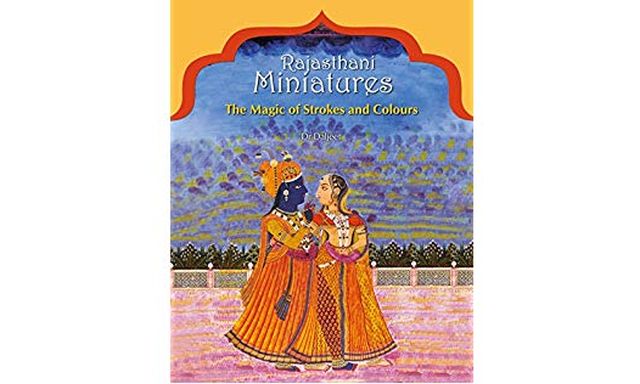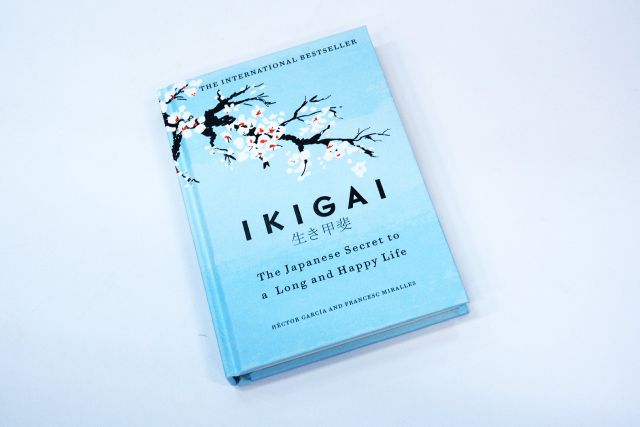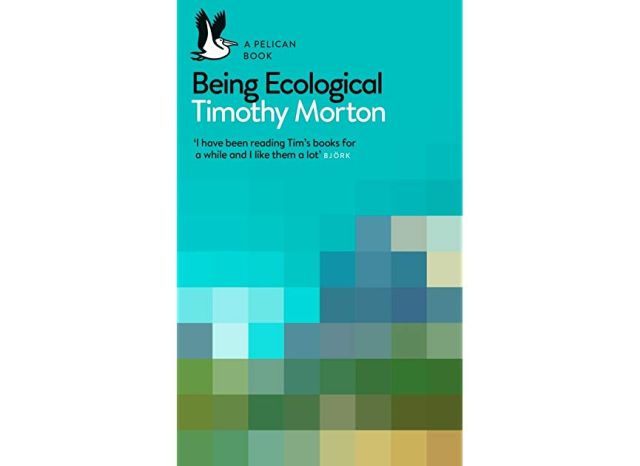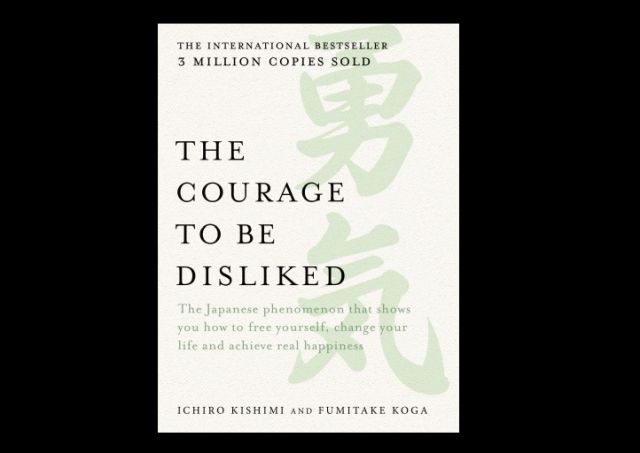
by admin | May 25, 2021 | Books
 By Siddhi Jain,
By Siddhi Jain,
Title: Rajasthani Miniatures: The Magic of Strokes and Colours; Author: Dr Daljeet; Publisher: Niyogi Books; Pages: 392; Price: Rs 4000
During the 1600s, the spiritual unity reflected in Rajasthani miniature paintings began giving way to a more popular trend — sensualism; and a century later, sensualism, or rather eroticism, was the focal point of both court life and court art, says art historian-archaeologist Dr Daljeet in her new book “Rajasthani Miniatures: The Magic of Strokes and Colours”, which she says is an outcome of her study focusing on “what defined Rajasthan in its totality”.
The “lila” between Radha and Krishna was an amalgamation of both romantic and spiritual for the Rajsthani artist, says the former curator and head of the Department of Painting in Delhi’s National Museum.
“Though the hero of Bhakti love poetry was Krishna, paintings depicting him in love scenes gained popularity from the 18th century, and slowly this type of depiction got more patronage from kings,” Daljeet told IANS.
This, the author explains in the book, allowed them “enormous opportunity for portraying various romantic moods and situations, even sensuous and erotic, and elevate at the same time the temporal to the transcendental, the mundane to the spiritual, by revealing the divine dimensions of their ‘lila'”.
“The Rajasthani painter saw hardly any contradiction in combining romance with religion, or the mundane with the transcendental.”
A primer on Rajasthani art, the volume elaborates upon the stylistic sources, mediums, styles, colours and significant themes of the paintings.
It also delves into the major schools of Rajasthani paintings — Mewar, Bikaner, Jodhpur, Nagaur, Jaipur, Alwar, Bundi, Kotah, Kishangarh and Nathdwara — according the paintings chronology and provenance.
She argues that each painting can be connected to a stylistic distinction practised at different ruling seats or even under different patrons. Nature, the author says, held great value for Rajasthani artists, for the simple reason that flora is scarce in Rajasthan.
“With a large part of its land a desert, the people of this western part of India had a special passion for nature, which is reflected in their paintings across centuries,” the introduction says.
“Surya, the sun god; Chandra, the moon god; Vayu, the wind god; and river goddesses Ganga and Yamuna are regular deities of the Brahmanical pantheon. In Rajasthani miniatures, their presence is largely symbolic and motif-based,” she writes in the book.
Peppered with information about the history of both art and Rajasthan, the book does not preach only to the converted, but painstakingly illustrates a larger context within which Rajasthani miniatures are placed and can be understood.
Despite an evident formal similarity, what distinguishes Rajasthani miniatures from their Mughal, Deccani, Central Indian or Pahari counterparts is their spiritual unity endowed by the culture of the land, Daljeet contends in the book.
The book, through a detailed narrative and exquisite photographs, allows a glimpse into the Rajasthani art that has spanned several millennia.
Truly, the book is a magical journey of strokes and colours.
(Siddhi Jain can be contacted at siddhi.j@ians.in)
—IANS

by admin | May 25, 2021 | Books
 By Vikas Datta,
By Vikas Datta,
Title: Forever and a Day; Author: Anthony Horowitz; Publisher: Jonathan Cape/Penguin Random House; Pages: 304; Price: Rs 599
Before he turned up at the baccarat tables of Royale-les-Eauex in an imaginative operation to discredit a French trade union leader and secret Soviet agent, how did James Bond get into the “00” section and pick up the mannerisms, moves and practices that made him the world’s most famous secret agent?
The question might have well-figured in the minds of aficionados of the Bond novels, which kept on coming even after the demise of his flamboyant creator, Ian Fleming, with a range of accomplished authors filling in — from Kingsley Amis to John Gardner, from Raymond Benson to Jeffrey Deaver, from Sebastian Faulks to William Boyd and Anthony Horowitz now.
But while most of them deal with Bond in the here and now, Horowitz, in his latest 007 outing after “Trigger Mortis”, goes into the past — before our hero strolled languidly into “Casino Royale” — to show how Bond became the 007 we know.
Keeping us of off guard right from the story’s first words, “So, 007 is dead”, Horowitz begins in the private sanctum of “M”, who is informed that the agent has been found fatally shot near Marseilles where he had been on an undercover mission to investigate the atypical behaviour of the local Corsican crime syndicate.
The presence in the area of a French woman, who served on the British side in World War II but has since become a purveyor of secret, strategic information, further complicates matters.
But with one 00 agent still in hospital and another in the US, M and his Chief of Staff have no other option but to expand the department by inducting a new man — once Bond has completed his lethal qualification by eliminating a wartime traitor in Sweden.
Needless, to say, he pulls it off without a hiccup — well, almost (but we need a reason for an angry glint in M’s grey eyes — is briefed on his mission in southern France and chooses to take the number of his late predecessor to send a message to their adversaries that whatever they think or do, his service will not be cowed down. “You can take one of us down but it changes nothing. We’ll come back the same and stronger as ever.”
Now in the south of France, Bond must find why his predecessor was killed, why the Corsican syndicate in the area, led in this case by a gargantuan gangster called Jean-Paul Scipio, has stopped its drug production activities, and what is the role of Joanne Broachet alia Madame Sixteen or Sixtine (her wartime code name).
Complicating the matter is the nature of her exact relation with multimillionaire American business Irwin Wolfe, who has a film (raw film, not movies) production factory in the area, as well as the ticklish problem of finding who exactly are friends and who are foes.
And there is some heartbreak at the end.
In line with Bond novels, and more like Bond films, Horrowitz works in all the staples we have come to expect: An operation before the customary briefing for the main job, an egocentric criminal mastermind whose plan is only slowly revealed, a high stakes game (vingt-et-un in this case) in an opulent casino, a strikingly attractive woman protagonist, magnificent vehicles, sticky situations resolved by breathless car chases, torture of our hero, and plenty of explosions.
And there are some Russians too — though never in a way you would expect.
However, where Horowitz scores — apart from recreating the low-technology millieu of 1950s in which our agent flourished — is with the inspired, but plausible, insights into the making of Bond.
These include the surprising origin of his trademark introduction, of the flirty banter with Moneypenny, the method of making his drink, how he found his favourite tobacconist, picked up his other hedonistic habits, and refined his pick-up technique, his feeling of being a man apart, his fatalism and so on.
For all those who write off 007 as a “Mr Kiss-kiss Bang-bang”, “a sexist, misogynist dinosaur”, the expression of fantasies (mostly male) expertly served, will have some good reason to re-evaluate their assessment. And the story is an apt setting.
(Vikas Datta can be contacted at vikas.d@ians.in )
—IANS

by admin | May 25, 2021 | Books
 By Vikas Datta,
By Vikas Datta,
Title: Ikigai: The Japanese Secret to a Long and Happy Life; Author: Hector Garcia & Francesc Miralles; Publisher: Hutchinson/Penguin Random House; Pages: 208; Price: Rs 499
A British businessman once recounted that while holidaying in Asia, he met a Japanese man in the swimming pool, and as soon they found they had common commercial interests, the latter took out a waterproof visiting card to give him. This may speak volumes about their business practices, but there are other lessons we can learn from the Japanese too.
Try to imagine the Japanese and what may come to mind is a polite but focussed and hard-working people that made their country a global economic power, but they also have an old and sophisticated culture and a way of life that sees the country having an exceptionally large number of centenarians — and fairly active ones at that.
Technological expertise and a strong work ethic may not be a sole Japanese trait, but their culture, some of whose enduring expressions are their magnificent gardens, their exquisite cuisine, the arts of bonsai, ikebana and origami, their tea rituals, Zen and concepts like “wabi-sabi”, make them worthy of study — and emulation.
But the most important would be their concept of ikigai, whose essence is expressed in the old Japanese proverb: “Only staying active will make you want to live a hundred years.” And, as this book brings out, it is based on no esoteric secrets or any special regimen of diet or exercise, but living fully and contentedly.
The co-authors — Spanish-born Japanese citizen and author Garcia and bestselling author of lifestyle books and novels Miralles, who met up in a tiny bar during a rainy Tokyo night — say they were discussing the questions that start to worry people (meaning of life, whether the point is just to live longer or have a higher purpose and so on) when “the mysterious word ikigai came up”.
Ikigai, which “translates roughly as ‘the happiness of always being busy’, is like logotherapy (developed by psychologist and Nazi concentration camp survivor Viktor Frankl) but goes a step beyond”, they say.
Take the residents of the country’s southern-most island of Okinawa, where there are 24.55 people over the age of 100 for every 100,000 inhabitants — far more than the global average. Along with climate, diet and activity, ikigai is cited as a reason why people of Okinawa live longer than people anywhere else in the world.
However, Garcia and Miralles, who researched ikigai with some heartening interactions with the island’s inhabitants, especially of a town there with the highest life expectancy in the world, also found that there is no single book dedicated to bringing this philosophy to the West, and resolved to remedy the deficiency.
And in this insightful book, they reveal how simple ikigai is to understand and follow.
Beginning with a Venn diagram that shows what it is: At the intersection of personal capability, predilection, profession and the world’s requirements, and how it benefits the residents of Okinawa as well as other Japanese, they explore the importance of both a sound body and mind — and how some stress helps.
They then trace how ikigai developed from Frankl’s logotherapy, predated by Japanese psychotherapist-cum-Zen Buddhist Shoma Morita’s purpose-centred therapy, but transcended both, and its correspondence with psychologist Mihaly Csikszentmihalyi’s “flow” theory.
But Garcia and Miralles’ work is not only about comparing theories — which they do most accessibly with the help of some tables, charts and diagrams. They enliven the account with concrete, real-world examples, like of some Japanese craftsmen who exemplify the flow technique, including one who was Steve Jobs’ favourite.
They continue in this vein with some advice from the centenarians — from the world over, not only Japan — feature traditions and proverbs from Japan, the diet that fuels Okinawa’s ikigai, top it up with simple but highly beneficial eastern exercises spanning tai chi to yoga to qigong before coming back to how to achieve ikigai through its 10 rules — the longest of which is seven words.
All this may seem basic common sense, but in our present, complex world, this is not very common. Try it and see — it doesn’t require much and there is not much to lose for you.
(Vikas Datta can be contacted at vikas.d@ians.in )
—IANS

by admin | May 25, 2021 | Books
 By Vikas Datta,
By Vikas Datta,
Title: Being Ecological; Author: Timothy Morton; Publisher: Pelican/Penguin Random House UK; Pages: 240; Price: Rs 399
Global warming is a reality and many throughout the world acknowledge it, but then, there are also significant, and influential, sections who dismiss it as a hoax. Why are they so dogged in denial? We can condemn their lack of awareness about the planet’s condition, but what if there is another reason — one we are all to blame for.
Is it that our whole approach to ecology — since the dawn of civilisation — has been faulty, particularly in the dichotomy between humans and nature, asks academician and philosopher Timothy Morton, and then goes on to show us how in this engaging book on ecology with a difference.
Morton, whose main work seeks to explores the intersection of object-oriented ontology (the philosophy based on the basic premise that “nothing can be accessed all at once in its entirety”) and ecological studies, first specifies what his book is not, or intends doing.
It is not a “confusing information dump”, most of which are frequently outdated by the time they are read, nor one of those “slapping you upside the head to make you feel bad” or “shaking your lapels while yelling disturbing facts”, or “hand-wringing in agony about ‘What are we going to do?'”. It thus, he says, avoids the “seductive rhetorical mode: the guilt-inducing sermon”.
But the biggest difference is that it doesn’t have one single fact about ecology or the environmental condition, and the author explains why, while contending what we think are facts are actually “factoids” or, say, facts with an agenda or spin.
All this should not lead you to believe Morton doubts global warming, for he doesn’t mince words in actually terming it a mass extinction — the sixth in our planet’s life, and when it actually began.
But his method is, however, not to follow the mistakes of other writers about environmental issues in furnishing a whole host of scary facts, which may seem important but are actually “inhibiting a more genuine way of handling ecological knowledge”.
Along with this contention — elaborated in his introduction — Morton also makes quite a convincing argument of how this fact or factoid-based approach fuels the rigidity of the global warming deniers.
As he tries to teach us how to better understand our planetary crises by “living ecology”, he stresses that for this, we must first understand the scope and limits of knowing and experiencing our world in the scientific way we have been used to. For this, he argues, creates an epistemological divide between objects and data, while the observer’s detachment from the phenomenon at hand is not helpful. “Being ecological includes a sense of my weird inclusion in what I’m experiencing,” he says.
But first, in order to “live” ecologically, Morton — provocatively but logically — stresses the imperative of breaking through the “massive firewall” our Neolithic ancestors built between humans and non-humans some 12,000 years ago, as they began creating agriculture and theistic religions.
We must abandon anthropocentrism, which makes humans think they are outside nature, when they are not, he says, drawing in everything from Sigmund Freud on post-traumatic stress disorder in dreams to Rolling Stones’ lyrics, from Star Wars’ “the Force” to Tibetan Buddhism to “The Matrix”, as well as a whole phalanx of philosophers and an expansive array of pop culture, to make his case.
And then also there are a wealth of other insights including how individuals are in no sense guilty for global warming — with the sobering corollary how their personal initiatives cannot atone — the difference between facts and data and the things they purportedly represent, how being in a “coldly scientific” era does not mean objectivity or how the whole is less than the sum of its parts.
Then we must learn that what is believed is not as important as how we believe, and many more that will lead us to question the very assumptions we have trusted so far.
Morton’s book is in no way a manifesto of what we can do to counter global warming, and all its attendant consequences, but an eye-opening look at humans’ role and connection with their world — and how unless we succeed in this venture, nothing we do is going to help.
(Vikas Datta can be contacted at vikas.d@ians.in)
—IANS

by admin | May 25, 2021 | Books
 By Vikas Datta,
By Vikas Datta,
Title: The Courage To Be Disliked; Author: Ichiro Kishimi & Fumitake Koga; Publisher: Allen & Unwin; Pages: 288; Price: Rs 499
The few irredeemable misanthropes apart, every human being has a unique relation with fellow beings — seeking to be associated with them, anxious for their approval, and on a larger scale, desirous of recognition. When this may not work out in the way expected, it gives rise to feelings of inferiority, sorrow or trauma. Is there a way out?
There certainly is, and it lies well within our own power — but a power we don’t know how to use, or rather frequently misuse. As John Milton put it: “The mind is its own place, and in itself can make a heaven of hell, a hell of heaven…”
But once it comes to the mind, then we must rely on a reliable explorer of the human psyche — in this case, another psychology luminary from late 19th/early 20th century Vienna, like his contemporary and peer Sigmund Freud, but nowhere as famous.
And this is despite influencing those forgotten classic of a more altruistic and empathetic age — Dale Carnegie’s “How to Win Friends and Influence People” and “How to Stop Worrying and Start Living”, to Stephen Cove’s more recent “The 7 Habits of Highly Effective People”.
This work, by a couple of Japanese adherents, seeks to give long needed due to Alfred Adler, who was a philosopher as well insofar as his work sought to transcend the bounds of clinical psychology and sought to give “simple and straightforward answers” to that vital question — “how can one be happy”.
Considered one of three giants of 20th century psychology along with Freud and Carl Gustav Jung, Adler, however, differed from them in focussing on the “externalities” of the human being, and not the internal mind. Though he called his work “individual psychology”, it was due to his treating human beings as an “individual whole”.
As co-author Koga notes, his phrase that it was “only in social contexts that a person becomes an individual” is telling.
But Koga, an award winning author, and Kishimi, a writer, translator, lecturer and counsellor of Adlerian psychology, use a very different, and lucid, way to acquaint us with Adler’s teachings. And more importantly, what benefit we can get from them.
They couch it in the form of a Socratic dialogue, with a philosopher, living “on the outskirts of the thousand-year-city”, and “taught that the world was simple and that happiness was within the reach of every man, instantly” is approached by a young man, “who was dissatisfied with life”, “found the world a chaotic mass of contradictions” and termed absurd “any notion of happiness” to understand why he believed so.
Over the vibrant debate, spread over five nights, we get acquainted with key rudiments of Adler’s theories, which require a special kind of “courage”, determination to change mindsets and purpose to keep true with the changes.
The rather calm sage, who begins with cogently seeking to convince the recalcitrant youth as to how people can change, why trauma doesn’t exist, how we can live without being controlled by our past and how unhappiness may be a personal choice, not a decree of inexorable fate.
Then, he goes on to weigh in on why we dislike ourselves, how our problems are interpersonal, what actually lies under the “inferiority complex” — one of Adler’s discoveries, how we can escape the “life-lie”, why we should not seek recognition, not make meeting others’ expectations our purpose and what real freedom is.
Subsequently, we learn why we are not the centre of the world, why we should not scold or praise, the difference between trust and confidence, why workaholism is not a desirable trait, and the vital importance of the here and now, over irretrievable past and uncertain future.
Basically, Adler, through this philosopher pupil, teaches us how not to be affected by the past, like oneself, be non-judgmental about others, not strive to meet others’ expectations, live life “moments to moment” and on our own tasks, not others.
The parable’s philosopher seems to have convinced this youth — will he have the same effect on you? Try his ideas, its not very hard but the rewards may be immense.
(Vikas Datta can be contacted at vikas.d@ians.in)
—IANS





